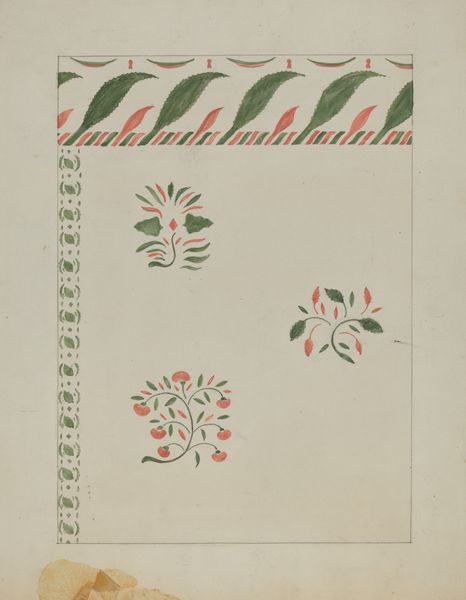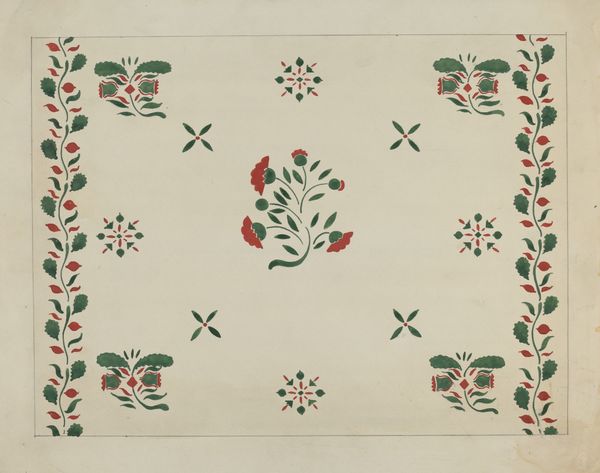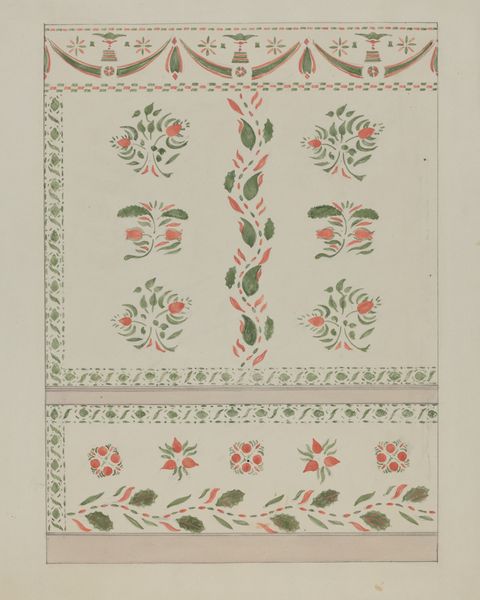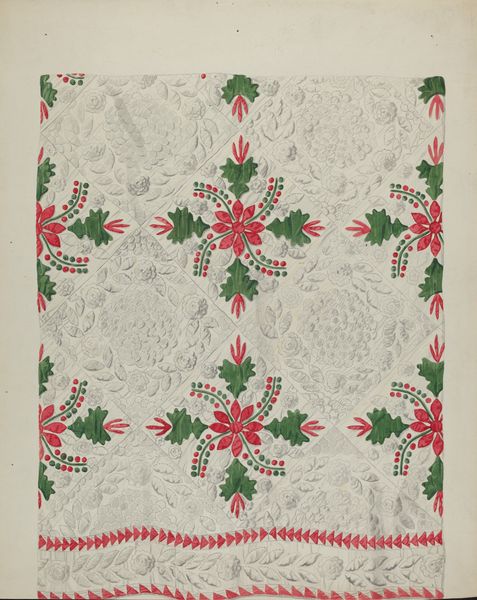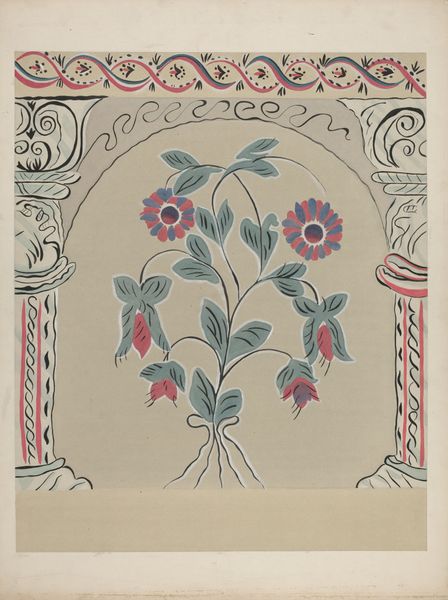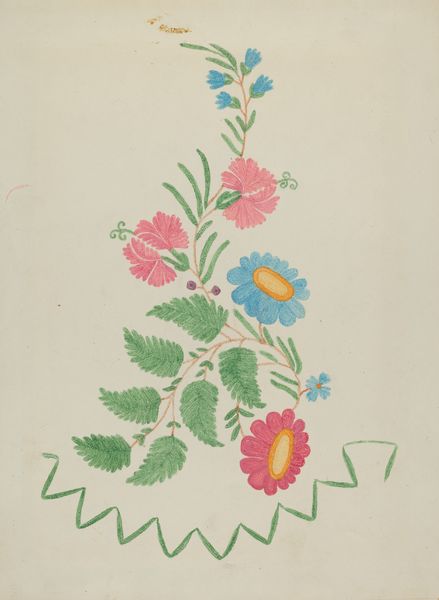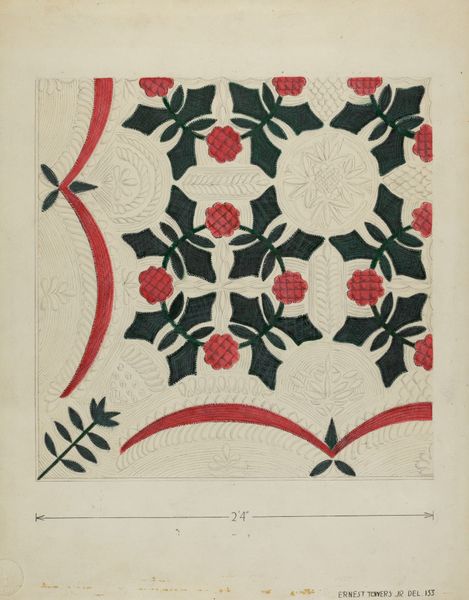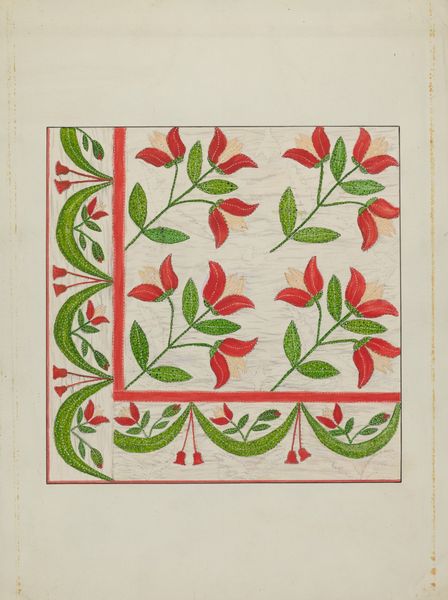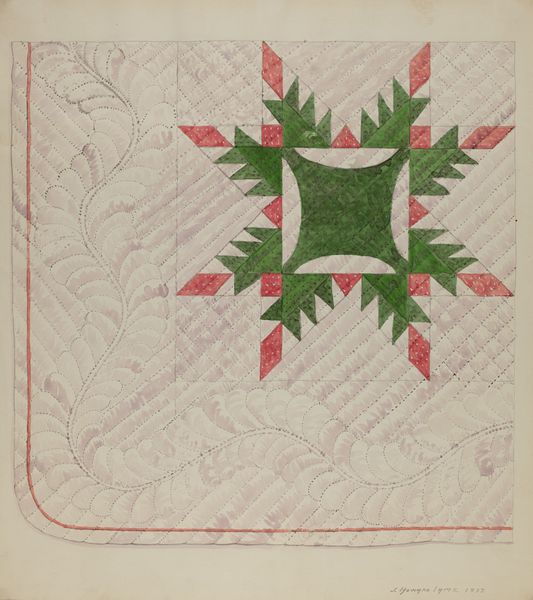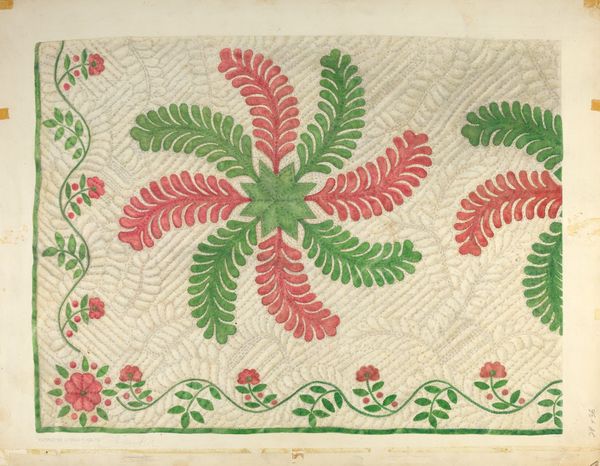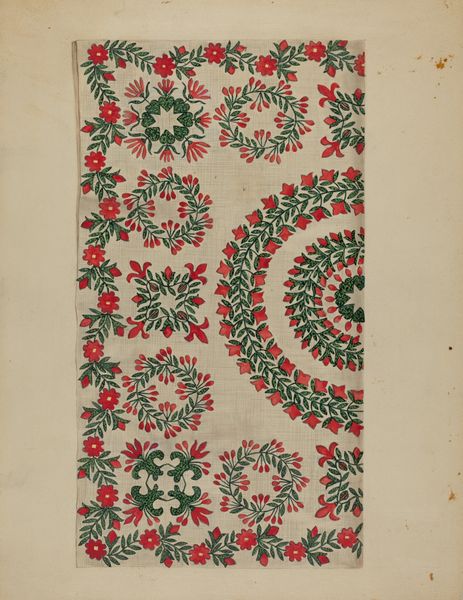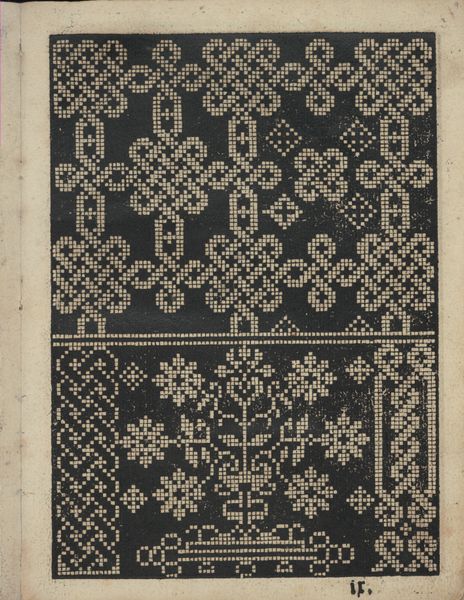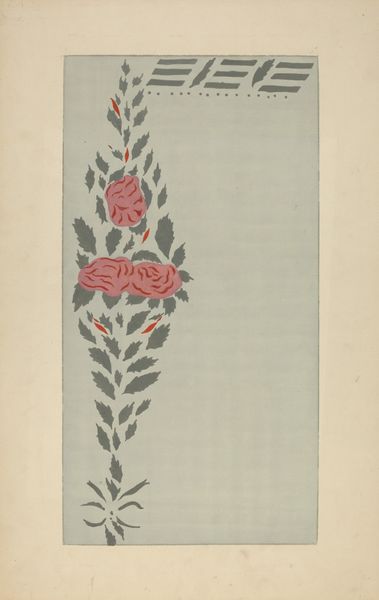
drawing, stencil, watercolor
#
drawing
#
stencil
#
watercolor
#
geometric
#
decorative-art
#
watercolor
Dimensions: overall: 63.8 x 40.1 cm (25 1/8 x 15 13/16 in.)
Copyright: National Gallery of Art: CC0 1.0
Curator: Alvin M. Gully's "Stencilled Wall (Detail)" from around 1940 presents an intriguing sample of decorative art. It’s watercolor and stencil on paper. Editor: Oh, that’s charming! It gives me such a calm feeling. All the light blue washes, it’s like a vintage dream or something from a lovely old storybook. Curator: Right, and notice how the stenciling creates distinct layers, indicating a process of repeated applications and the standardization inherent to decorative arts. I wonder about the original context. Was this a commercial design for mass production? Or a custom design? Editor: Good question! To me, it’s got this real handmade feel. Even if the patterns were planned, the watercolor wash seems so personal. Almost like someone adding their own soft touch. It’s not as crisp or as clean as some industrial wallpaper designs. Curator: Indeed. The imperfection is revealing. These motifs – florals, geometric shapes, even what appears to be stylized fruit – speak to popular tastes of the period, probably aiming at domestic interiors and feminine preferences. Editor: You can really picture this in an old bedroom, can't you? Although those stripes on either side look kind of funky to me. Like a strange addition of modernism, which contrasts with the floral arrangement in the middle section. Curator: Perhaps these vertical sections are intended for edges, as accents. Let’s consider Gully’s access to materials during that time. Were certain pigments or paper grades more available than others? This speaks to resource constraints, right? Also, stenciling itself as an accessible technology for widespread reproduction… Editor: Thinking about process, the stencils might have been hand-cut. The leaves are just so delicate! Each layer probably involved care and a little bit of artistic gamble. Makes you appreciate it all the more, you know? That little touch of hand. Curator: Definitely. This piece transcends simple ornamentation. It prompts a dialogue about material conditions, artistic agency, and the blurring boundaries between art and everyday life. Editor: Exactly, and maybe that little bit of human wobble, it's the secret magic here. You suddenly glimpse this artist working patiently on something simple and delightful, giving it a life all its own.
Comments
No comments
Be the first to comment and join the conversation on the ultimate creative platform.

